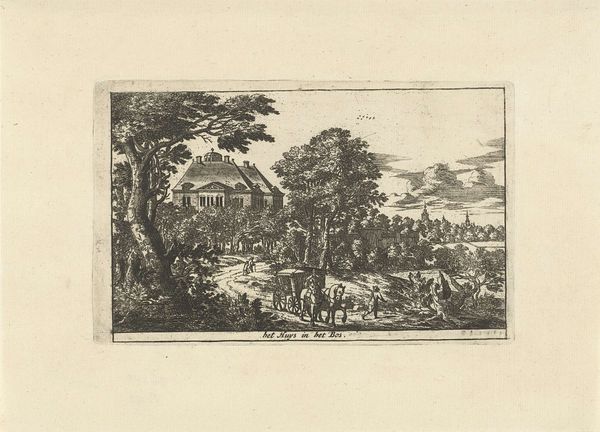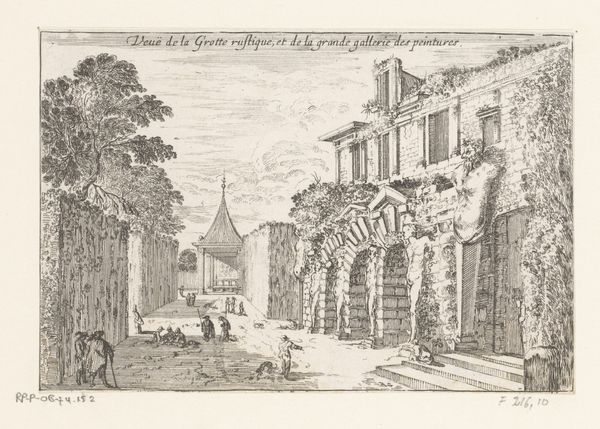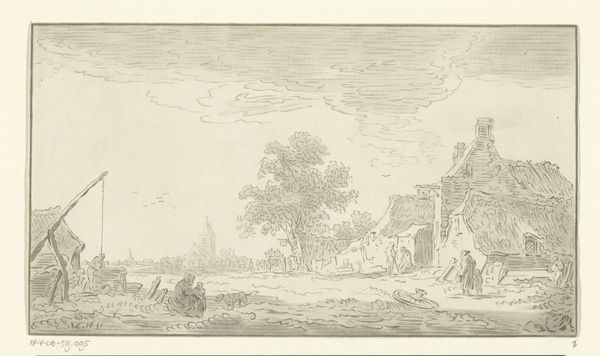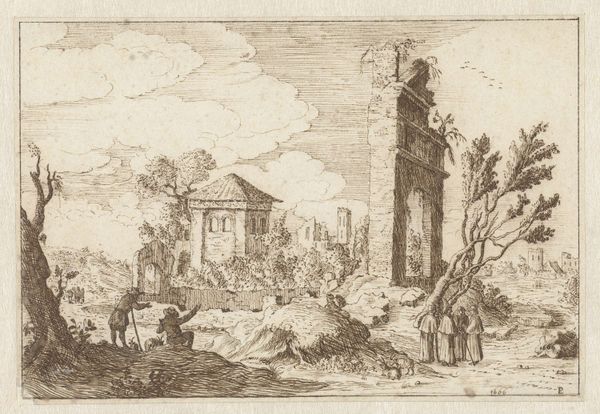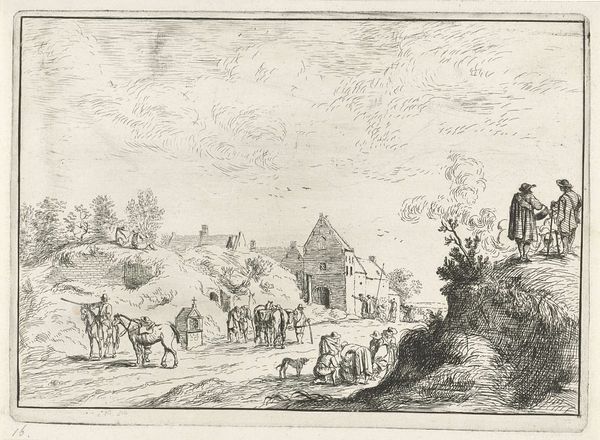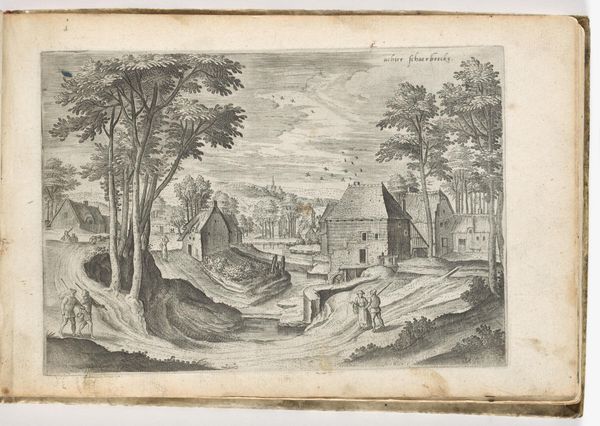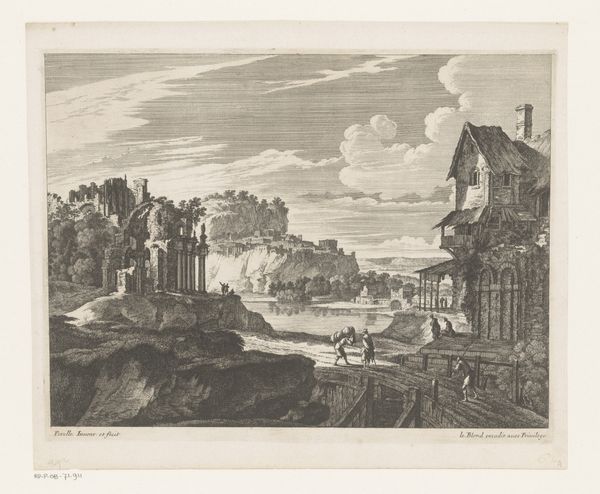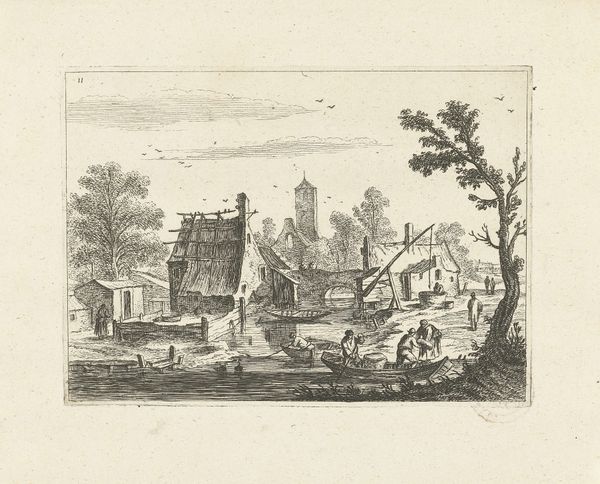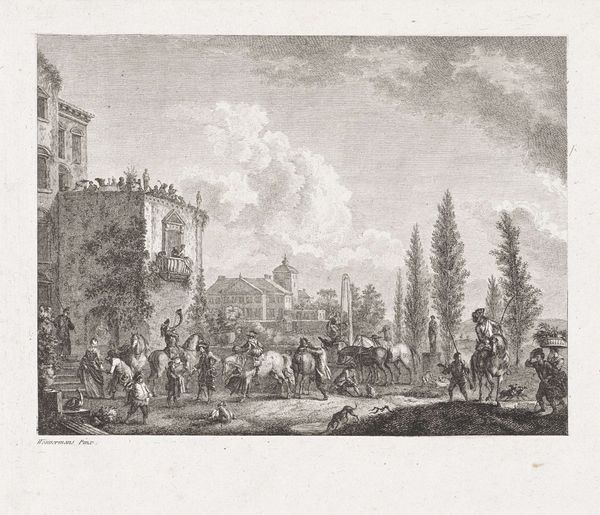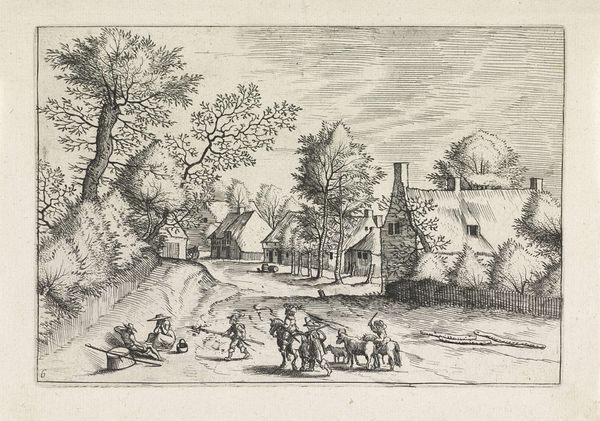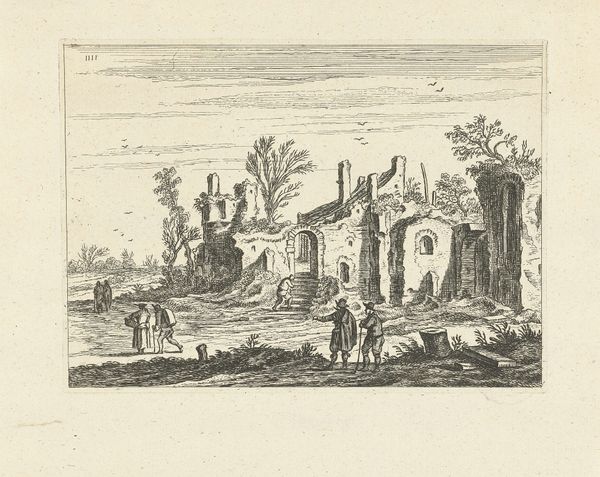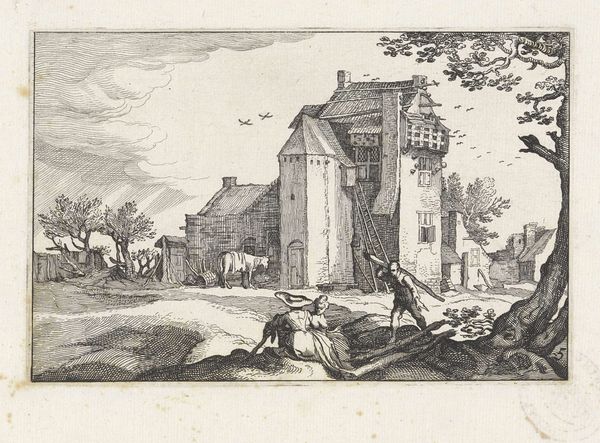
print, engraving
#
baroque
# print
#
old engraving style
#
landscape
#
islamic-art
#
genre-painting
#
engraving
Dimensions: height 63 mm, width 127 mm
Copyright: Rijks Museum: Open Domain
This etching, "Loofhuttenfeest (Soekot)," was created by Jan Punt in the 18th century. It illustrates the Jewish festival of Sukkot, or the Feast of Tabernacles, with families gathered in temporary dwellings known as sukkahs. The sukkah itself is the dominant symbol here, evoking the impermanence of life and the Israelites’ journey through the desert after their exodus from Egypt. We see variations of this motif echoing throughout history, from nomadic shelters to temporary harvest huts, each reflecting a human need for shelter and community. The sukkah, covered with foliage, links to ancient harvest festivals, where temporary shelters were built to celebrate nature's bounty. This deeply ingrained human impulse to mark time through seasonal rituals evokes a sense of collective memory. We are drawn to these images on a subconscious level because they resonate with our ancestors' practices and fears. The cycle of building, dwelling, and dismantling reflects the transient nature of existence, a universal theme that transcends time. These symbols are always dying, always being reborn.
Comments
No comments
Be the first to comment and join the conversation on the ultimate creative platform.
